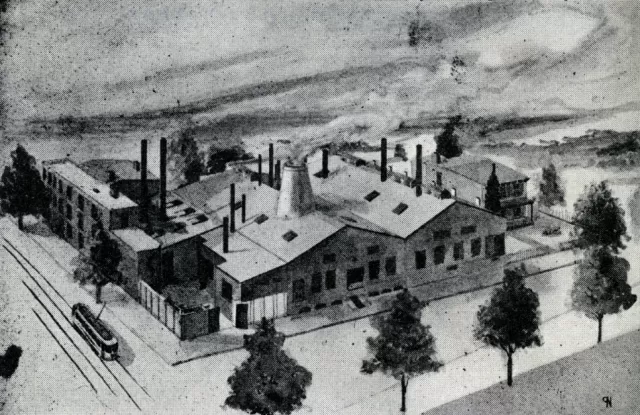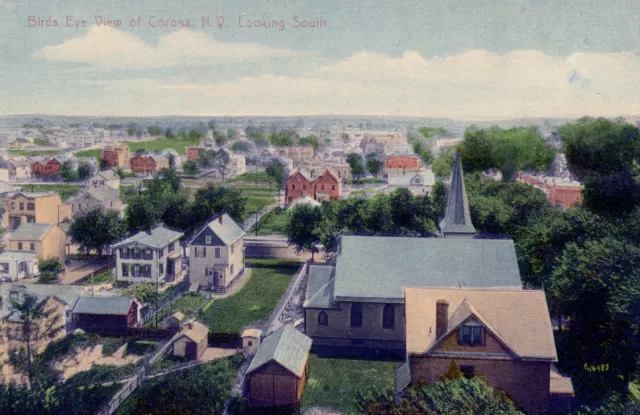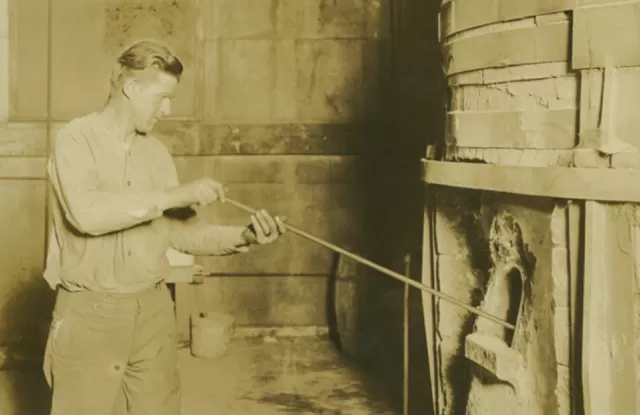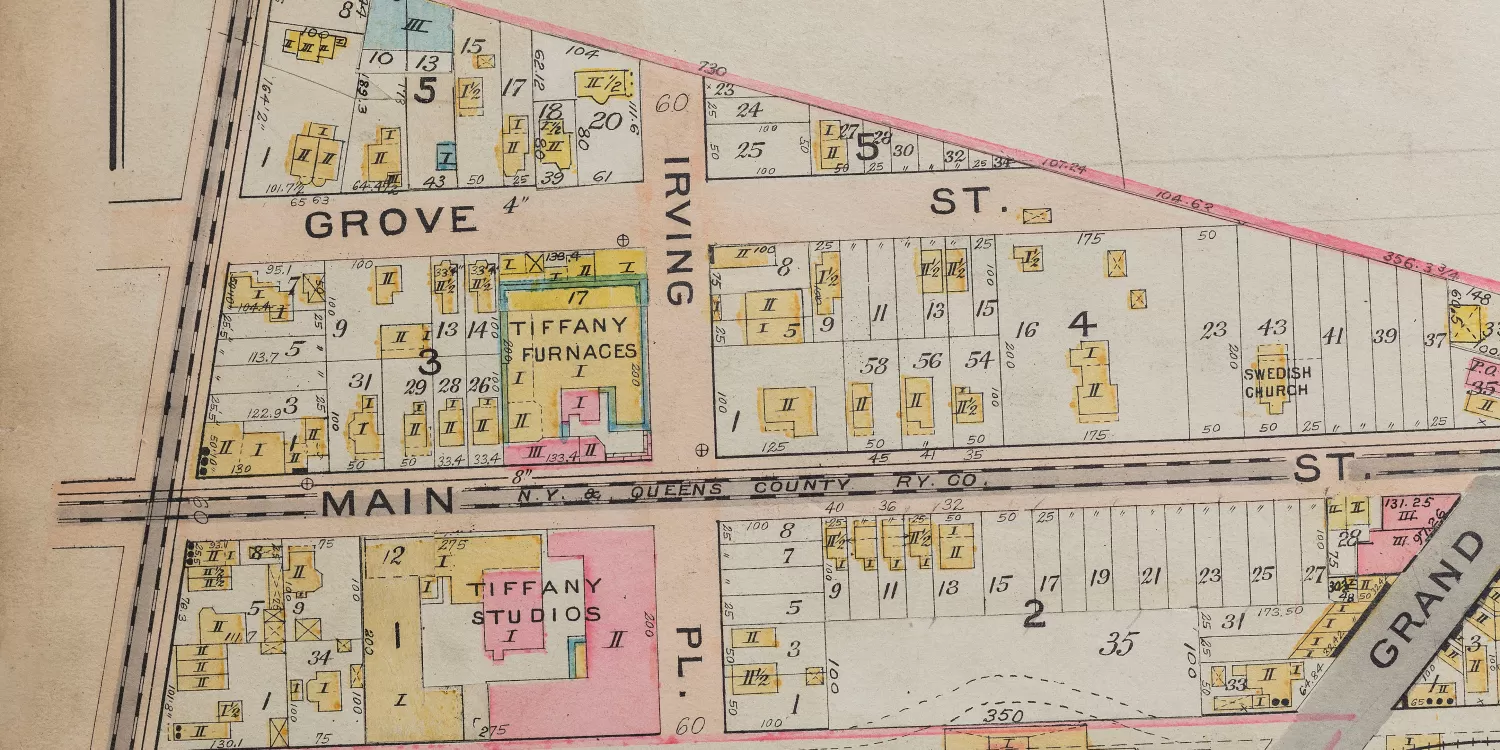Above: Sanborn fire insurance map, Corona, Queens, New York, 1908
The epicenter of Tiffany’s hot production
By the early 1890s, Tiffany was focusing his attention on the creative potential of glass. He tried working with existing glasshouses, but became eager to take control of the creative process and experiment on his own.
In 1893, he purchased a site in Corona, which was then a relatively rural area in Queens, and built glass furnaces. There he employed skilled chemists to develop new recipes and decorative effects for sheet and blown glass. These formulas were fiercely guarded secrets, so the seclusion of Corona—situated safely away from the prying eyes of his competitors—was ideal. Located on what is today the corner of 43rd Avenue and 97th Place, Tiffany called this new venture the Stourbridge Glass Company (later renamed Tiffany Furnaces).
As Tiffany’s businesses grew, he significantly expanded his operations in Corona. A decorative enamel department and a small pottery studio were added by 1900. Across the street, between the glasshouse and the railroad, he established the Allied Arts Company (later renamed Tiffany Studios)—a large complex of brick buildings that eventually housed woodworking shops, lampshade and chandelier departments, and a foundry and metal shop for brass, bronze, and iron. At this location Tiffany's facilities created everything from furniture and lighting fixtures to desk accessories, elevator doors, and monumental sculpture. At the height of production in Corona, he employed several hundred workers.
Changing tastes and a declining economy eventually contributed to the demise of Tiffany’s artistic empire. Production wound down during the 1920s, and the Corona complex finally closed its doors around 1930.




